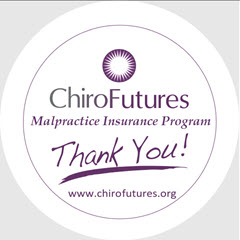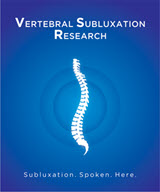Chiropractic Expert Says Australian Board's Infant Ban Further Evidence of a “Coup d’état” of the Profession’s Identity

Editors Note: Dr. Senzon is a Ph.D student at Southern Cross University. His work, funded by the Foundation for Vertebral Subluxation is to contribute to knowledge by exploring the professionalization of chiropractic. His work emphasizes historical and scholastic errors in the literature as well as social science views of the profession. It is hoped that this unique contribution to knowledge will establish a new foundation for research into chiropractic, the chiropractic subluxation, health care, and professionalization.
In a recent stunning move by the Australian Chiropractic Board, spinal manipulation for children less than 2 years old has been banned until a study can be completed for efficacy.[1] Chiropractors in Australia are expected to comply with the interim policy and continue to follow guidance provided by the Statement on Paediatric care and the Code of Conduct for Chiropractors.[2, 3]
This move seems to have been driven by hysteria over a YouTube post of a chiropractor caring for an infant.[4] A more critical look at the board’s position points to a general lack of understanding of the literature on chiropractic pediatric care and exaggerated and unnecessary hype, especially due to the fact that most chiropractic approaches to pediatrics involve low force applications.[5]
A statement from the Chiropractic Board of Australia reads, ". . . the Board acknowledges there is no current clinical guideline, or peer-reviewed publication to guide chiropractors with respect to the care of infants and young children, and the use of spinal manipulation in particular."[1]
This statement may provide further evidence that a small segment of the chiropractic academic community is consolidating a power grab referred to in 2011 by a prominent sociologist as a “coup de d’état” of the profession’s identity.[6]
Such a widely publicized ban of a practice that is not a commonly used form of care for young children could be misunderstood or conflated with the mainstream approaches to pediatric chiropractic care, which are well supported in the literature,[5, 7, 8] by the public and regulators.
Chiropractors have successfully managed pediatric care at least since 1906.[9] Chiropractors teach pediatric care at the undergraduate and postgraduate level.[10-12] Chiropractic associations have posted statements on chiropractic pediatric care.[13, 14] There are published textbooks on pediatric chiropractic care,[15, 16] guidelines, best practices, and core competencies for chiropractic pediatric care have been developed,[7, 17-20] limited reviews of the literature on pediatric chiropractic care have been published,[8, 21-24] and peer-reviewed research on pediatric chiropractic care is ongoing.[5, 25-28]
Considering the published literature on chiropractic pediatrics, it seems that either the leadership of the board may be ignorant about the basic facts of their own professional literature or they are deliberately stating falsehoods and driving unnecessary distrust and misunderstanding with the public about pediatric chiropractic care, which is safe and effective.
In either case, this crisis in the chiropractic profession has obvious roots in the analysis developed in 2011, by Villanueva-Russell, Assistant Dean of the Honors College, and professor of sociology at Texas A&M University. Villanueva-Russell conducted a discourse analysis to understand the “identity” movements within the chiropractic profession. She found that:
“…changes to identity are being initiated by academic chiropractors as a coup d’etat using the commitment to science (seen operating at the textual, discourse practice and social practice levels through EBP, lexicon cleansing and reformed scope of practice laws) to achieve intraprofessional control.”[6]
This observation from 2011 has only intensified in the last eight years, whereby the small group of academic chiropractors have used their positions in academia and in control of journals to establish a culture of “fake truth.” In this sense, “fake truth” is a type of postmodern misuse of knowledge and data to position and privilege viewpoints. In this case, it is dominated by those seeking to ban traditional chiropractic practices.
Villaneuva-Russell continues:
“The growing divide between the everyday chiropractor whose views are only available by proxy through methodologically flawed surveys are being systematically silenced by the claims of academic chiropractors, who utilize rhetoric, status, institutional position, and their roles as gatekeepers to journals as a means to dominate the discourse.”[6]
Villanueva-Russell’s critique is prescient, that Evidence Based Practice (EBP), as the sole arbiter of evidence in chiropractic, is being used as a tool for power consolidation in the profession. The appropriateness of EBM standards is being questioned as the sole arbiter of efficacy for research in medicine,[29] alternative medicine,[30] osteopathy,[31] and chiropractic.[32-34] Perhaps it is time these critiques be taken seriously by the profession.
If events like those occurring in Australia and Canada are not wake-up calls to the “everyday chiropractor,” the future right to practice based on evidence informed subluxation care may eventually be in jeopardy worldwide.
Simon Senzon MA, DC
Advancing Futures Scholar - Foundation for Vertebral Subluxation
References
1. CBA, Position statement: Interim policy on spinal manipulation for infants and young children. Chiropractic Board of Australia, 2019. Mar.
2. CBA, Statement on Pediatric Care. Position Statement, 2017. June 20.
3. CBA, Code of Conduct for Chiropractors. 2014: Chiropractic Board of Australia: AHPRA.
4. Australia's Victorian Health Minister "Appalle" over baby being adjusted, in Chronicle of Chiropractic. 2019: http://chiropractic.prosepoint.net/162668.
5. Todd, A.J., M.T. Carroll, and E.K. Mitchell, Forces of commonly used chiropractic techniques for children: a review of the literature. Journal of manipulative and physiological therapeutics, 2016. 39(6): p. 401-410.
6. Villanueva-Russell, Y., Caught in the crosshairs: Identity and cultural authority within chiropractic. Social Science & Medicine, 2011. 72(11): p. 1826-1837.
7. Hawk, C., et al., Best practices for chiropractic care of children: a consensus update. Journal of manipulative and physiological therapeutics, 2016. 39(3): p. 158-168.
8. Alcantara, J., J. Ohm, and D. Kunz, The safety and effectiveness of pediatric chiropractic: a survey of chiropractors and parents in a practice-based research network. Explore: The Journal of Science and Healing, 2009. 5(5): p. 290-295.
9. Our Yougest Patient. The Chiropractor, 1906. 2(2): p. 11.
10. ICPA. ICPA Diplomate Program. 2019.
11. Hayworth, N. and P. Ebrall, Undergraduate paediatric curriculum at RMIT School of Chiropractic 2010. RMIT University, 2010.
12. ICA. Diplomate in clinical chiropractic pediatrics. 2019.
13. ACA, ACA Pediatrics Council Position Statements: Safety of Chiropractic Care for Children. 2015, American Chiropractic Association: ACAPEDSCOUNCIL.org.
14. ACA, ACA statement on pediatric care, A. Bernat, Editor. 2016, American Chiropracti Association: ACA Today.
15. Anrig, C.A., C.A. Anrig, and G. Plaugher, Pediatric chiropractic. 2013: Wolters Kluwer/Lippincott Williams & Wilkins Health.
16. Davies, N.J., Chiropractic pediatrics: a clinical handbook. 2000: Elsevier Health Sciences.
17. Hewitt, E., L. Hestbaek, and K.A. Pohlman, Core Competencies of the Certified Pediatric Doctor of Chiropractic: Results of a Delphi Consensus Process. J Evid Based Complementary Altern Med, 2016. 21(2): p. 110-4.
18. Sharon Vallone, D., C. Hawk, and L.Z. Killinger, Chiropractic Care for Special Populations: Pregnant Women, Children, and Older Adults. The Praeger Handbook of Chiropractic Health Care: Evidence-Based Practices, 2017: p. 253.
19. Hawk, C., et al., Best practices recommendations for chiropractic care for infants, children, and adolescents: results of a consensus process. J Manipulative Physiol Ther, 2009. 32(8): p. 639-47.
20. ICA, Best practices and guidelines. 2018, Falls Church, VA: International Chiropractors Associaiton.
21. Doyle, M.F., CHIROPRACTIC CARE FOR INFANTS AND CHILDREN-THERE IS NO EVIDENCE FOR IT AND IT IS DANGEROUS? A SELECTIVE REVIEW OF THE LITERATURE AND COMMENTARY. Chiropractic Journal of Australia, 2016. 44(3).
22. Alcantara, J., J. Ohm, and D. Kunz, The chiropractic care of children. J Altern Complement Med, 2010. 16(6): p. 621-6.
23. Alcantara, J., J.D. Alcantara, and J. Alcantara, A systematic review of the literature on the chiropractic care of patients with autism spectrum disorder. Explore, 2011. 7(6): p. 384-390.
24. Alcantara, J., J.D. Alcantara, and J. Alcantara, The chiropractic care of infants with colic: a systematic review of the literature. EXPLORE: The Journal of Science and Healing, 2011. 7(3): p. 168-174.
25. ICPA, Chiropractic Research. https://icpa4kids.org/Chiropractic-Research/, 2019.
26. Alcantara, J., et al., The Quality of Life of Children Under Chiropractic Care Using PROMIS-25: Results from a Practice-Based Research Network. The Journal of Alternative and Complementary Medicine, 2018. 24(4): p. 378-384.
27. Todd, A.J., et al., Adverse events due to chiropractic and other manual therapies for infants and children: a review of the literature. Journal of manipulative and physiological therapeutics, 2015. 38(9): p. 699-712.
28. Pohlman, K.A., et al., Attitudes and opinions of Doctors of Chiropractic specializing in pediatric care toward patient safety: a cross-sectional Survey. Journal of manipulative and physiological therapeutics, 2016. 39(7): p. 487-493.
29. Lambert, H., Accounting for EBM: notions of evidence in medicine. Social science & medicine, 2006. 62(11): p. 2633-2645.
30. Koutouvidis, N., CAM and EBM: arguments for convergence. Journal of the Royal Society of Medicine, 2004. 97(1): p. 39-40.
31. Parker, J.D., Reversing the Paradox: Evidence-Based Medicine and Osteopathic Medicine. The Journal of the American Osteopathic Association, 2014. 114(11): p. 826-827.
32. Rosner, A., Evidence-based medicine: revisiting the pyramid of priorities. Journal of Bodywork and Movement Therapies, 2012. 16(1): p. 42-49.
33. Draper, B. and D. Richards, Commentary: Clinical uncertainty. Chiropr J Aust, 2013. 43(3): p. 99.
34. Villanueva-Russell, Y., Evidence-based medicine and its implications for the profession of chiropractic. Social Science & Medicine, 2005. 60: p. 545–561.
Blogs
- The Chiropractic Cartel: A Look Back at Bias in Accreditation and its Imact on Today's Profession
- Inside Montana's Chiropractic Monopoly: ACA & MCA's Brazen Board Takeover
- Concerns Grow About Control of the NY State Chiropractic Board by the ACA - Use of X-ray in NY Under Threat
- Reproductive Health Information and Chiropractic Care: Navigating New Privacy Regulations
- Navigating Substance Use Disorder (SUD) Consent: What Chiropractors Need to Know













